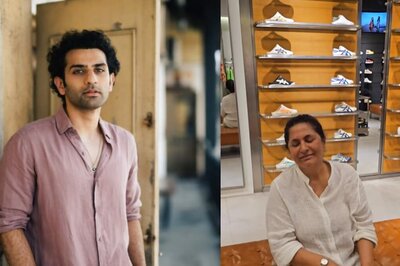
views
How effective are the existing social distancing norms when it comes to the poor, who live in densely populated slums and whose children may not have access to online tuition classes to which a lot of private and public institutions have turned over the past two months? In an interview with News18, Sarani Khatua, a researcher with the Centre for Urban Economic Studies, University of Calcutta, talks about this question and argues that the state response to Covid-19 is only exacerbating class differences.
How do you think social distancing can be achieved in high-density, low-income settlements like Dharavi in context of the challenges posed by Covid-19?
Social distancing within the slum community is neither possible nor can it be the aim. Instead, distancing implies sealing the entire slum neighbourhood to limit the spread of the contagion to others. The fact is slum structure, which has been existent through decades, is based on the principle of clumping maximum numbers in minimum area. Now can you change that overnight or within a few days? Does the state have any intention of doing that? Under current circumstances, at least better infrastructure like provisioning of enough water supply, sanitising the areas regularly, building toilets, etc, would enable them to maintain basic hygiene. For these, you don't even need to change the structure .
You have also argued that the novel coronavirus is further expanding our class differences. Why do you feel so?
Let me start by citing an example. Take the case of education. During the lockdown, there has been a push for online education. Similarly, classes have resumed from home digitally in schools and colleges. But what about the slum children who are enrolled in municipal schools or government schools? Even they have students who would be sitting for board exams and need to resume their courses immediately.
It is absurd to think that they would be opting for online education or can afford to do that. Besides can these schools arrange for this? As it is we know that for children of a large number of migrants, who are leaving cities faced with a very uncertain future, continuing education is perhaps not even a priority right now. Is it not likely to magnify the class difference?
Let me take another example. In areas which are orange and green zones, plying of vehicles is allowed though proper social distancing needs to be maintained. In many of these areas, public transport is either non-existent or barely visible. Some are availing app-based cab services and taxis at higher rates. But how many people own a car or can afford such taxi or app cabs? Those living in low-income settlements do not have the option of working from home.
Though demands have been raised for re-looking at mobility, public transport, promoting cycling, this will take time. As of now, what I see is a widened class gap.
Do you think that the very nature of these urban slum clusters is going to see a long-lasting change with many of the migrant workers leaving cities for their villages?
Personally I don’t think seasonal or cyclical migrants won’t return. Yes, it may affect the available manpower in the short term. Once the economic activities resume, workers will return from rural areas and if states follow the examples of Telangana or Gurugram, the possibility of their return increases. The situation in the rural areas is not very conducive.
What may happen is that the small and medium cities which have gained visibility in the last few years are likely to further emerge as more favoured destinations for migrants. However, I would appreciate if recent incidences of exodus and their wide coverage and criticism exerts enough counter-pressure and enables a stronger policy protecting their rights regarding their work, shelter, rent, etc.
Do you feel that Covid-19 is going to leave a lasting impact on social relations?
With respect to demographic density, I can say that in the last few years, urban had moved beyond demographic numbers alone. But this pandemic has brought back these very basic numbers. We are forced to look into demographic density when we are talking about the risk of pandemic especially in slums. In past decades, there have been a number of projects and policies on slums, but the challenges associated with density and overcrowding still remain.
Social grouping and social relations are likely to change as per my opinion. Social distancing has been existent in India in the name of caste, class, gender, and so on. The pandemic is likely to deepen those social fissures, particularly as the economy is steadily slumping. In the near future, a large chunk of the middle class is likely to get pushed below the poverty line, making things much more chaotic.
One thing which I feel is most likely to aggravate is groupism. The social groups based on religion, wealth, slum and non-slum are likely to become prominent. From the perspective of those living in slums, it may be considered that this crisis was brought in by those living in apartments and those who have global mobility. Resistance, backlash, protest are already visible and are likely to increase. I would not be surprised if the power play between different groups becomes the determining factor in who gets what. But yes, predicting specific outcomes is difficult as of now.




















Comments
0 comment